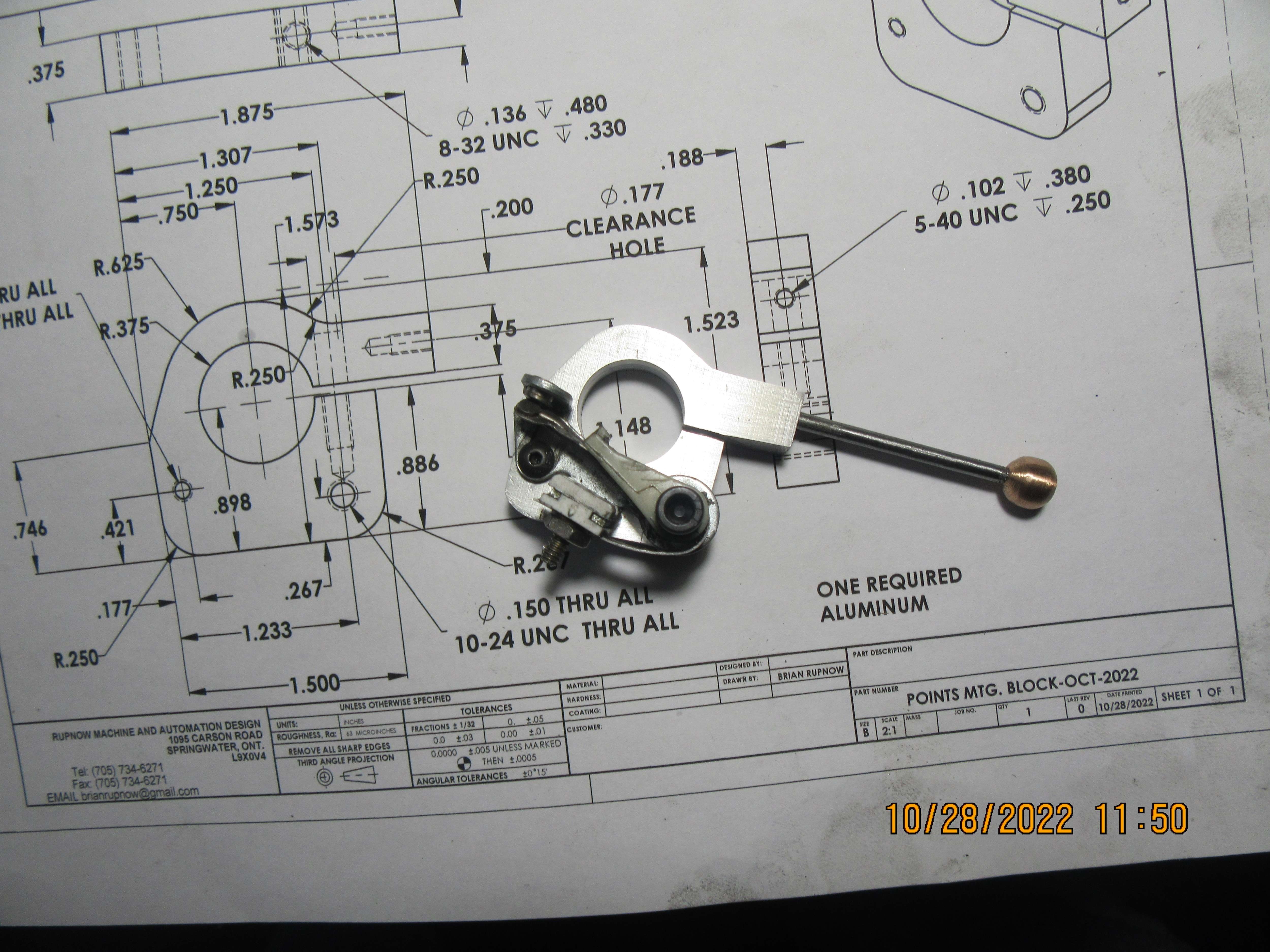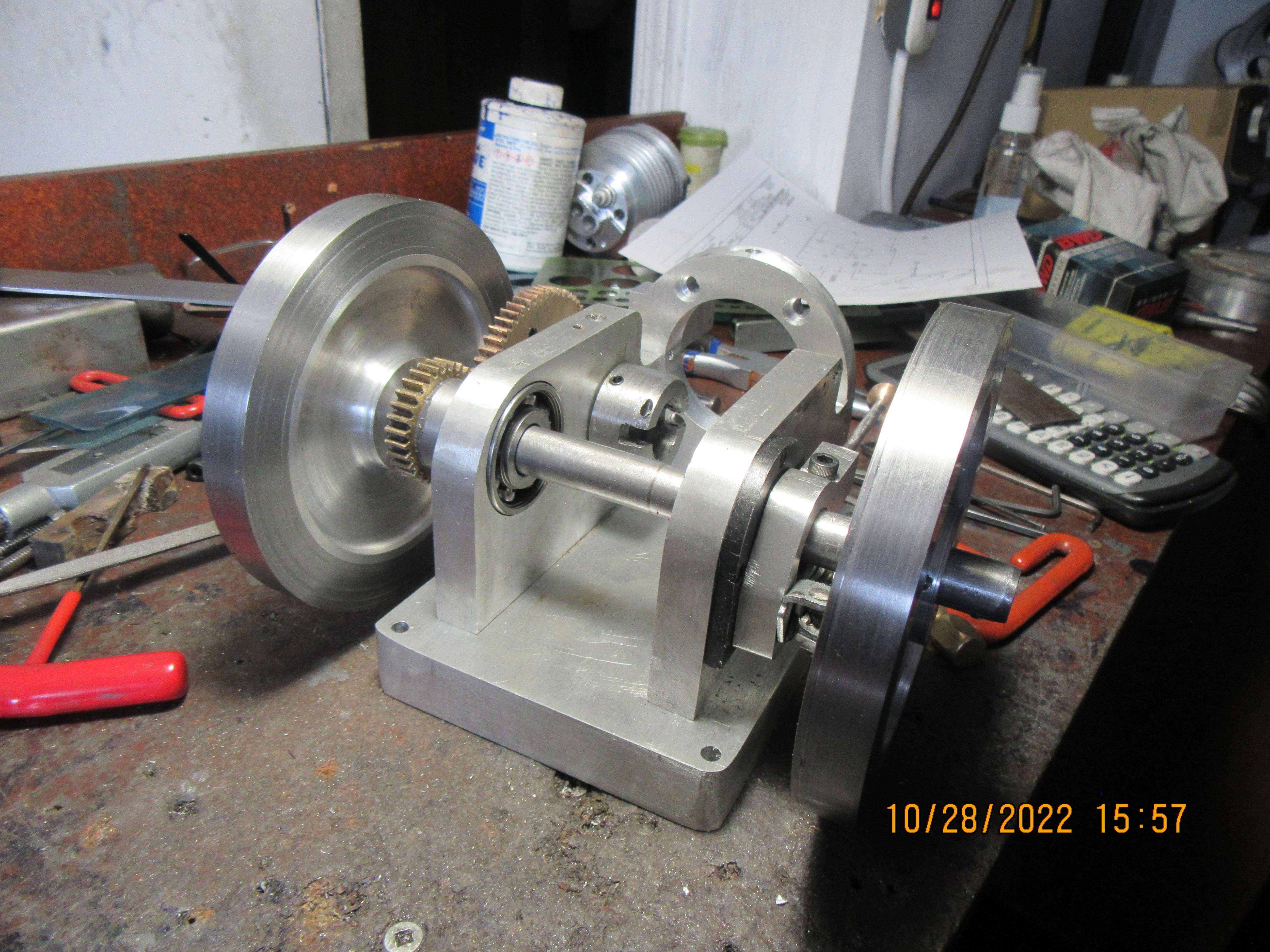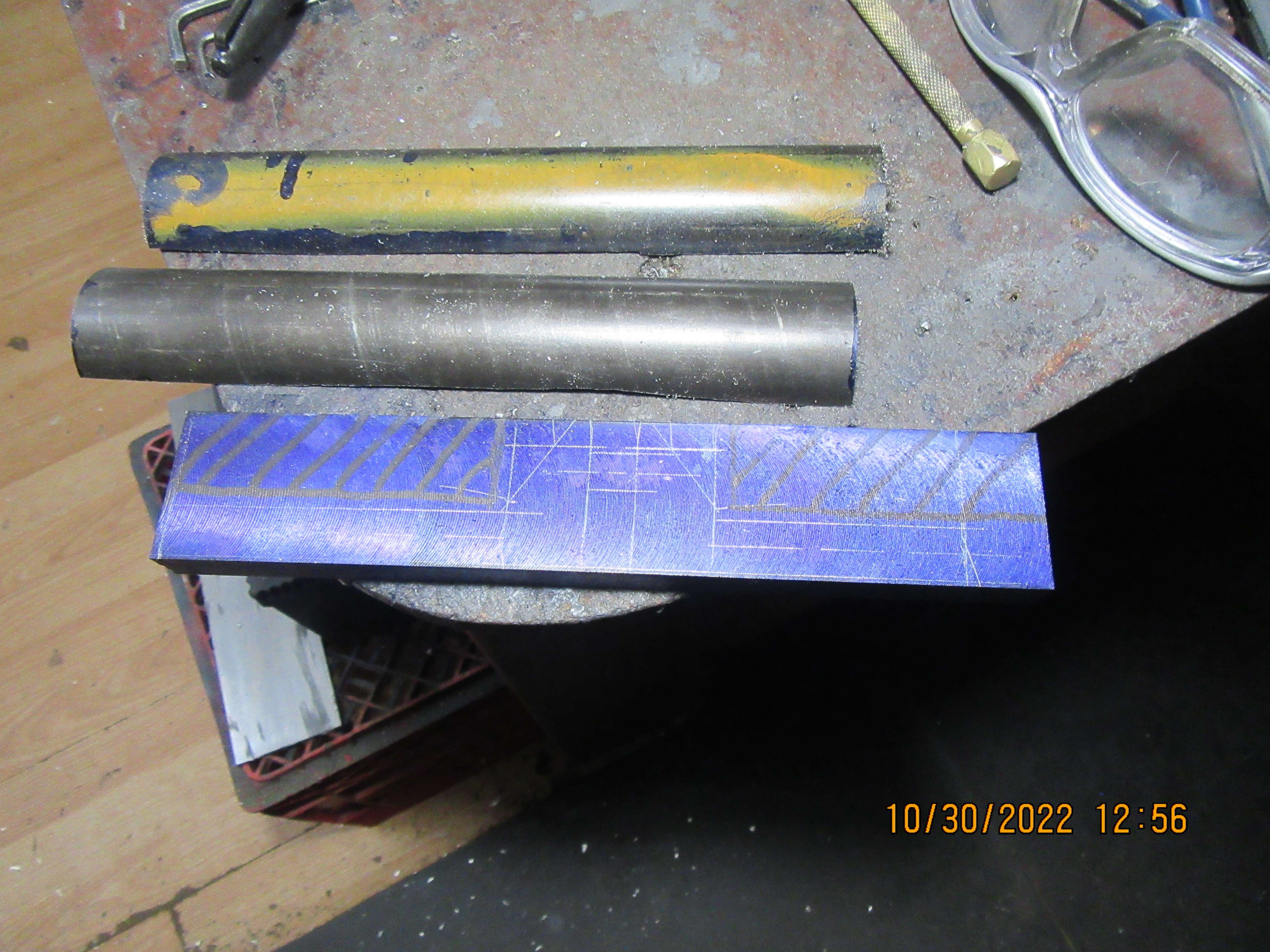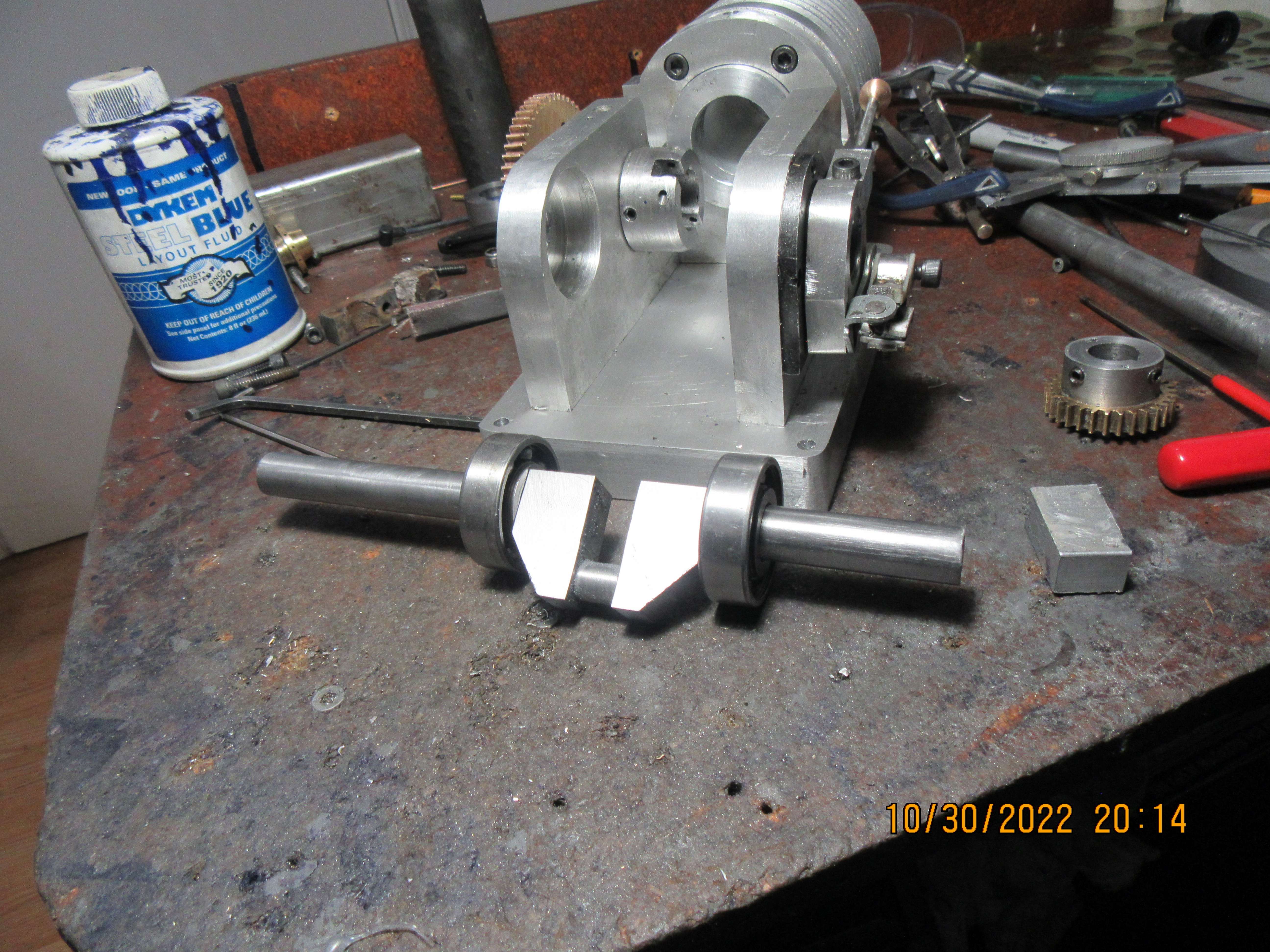You don't. Not without a lot of grief anyways. These bearings are not self aligning. To get away without any binding, the counterbore holes in the engine sideplates are bored about .002" to 0.005" larger than the outer diameter of the bearings. The o.d. of the bearings are then coated lightly with J.B. Weld, pushed fully into their recesses in the engine sideplates, then a 1/2" length of cold rolled steel is passed thru both bearings, all of the bolts holding the sideplates in place are torqued down, and the J.B.weld is allowed to set up for 24 hours. This guarantees perfect alignment of the bearings. The counterbored holes that the bearings fit into have a 9/16" clearance hole where the shaft passes thru. If you want to remove a bearing, the shaft and sideplates are removed, the sideplate is heated with a torch until the J.B.Weld lets go, then the bearing is tapped out with a 9/16" drift punch. Today I heat treated (hardened) the cam shaft and reinstalled it, made a new ignition cam and installed it, and had to do a bit more machining on the underside of the sideplates because they weren't perfectly square to the frontplate that holds the cylinder.





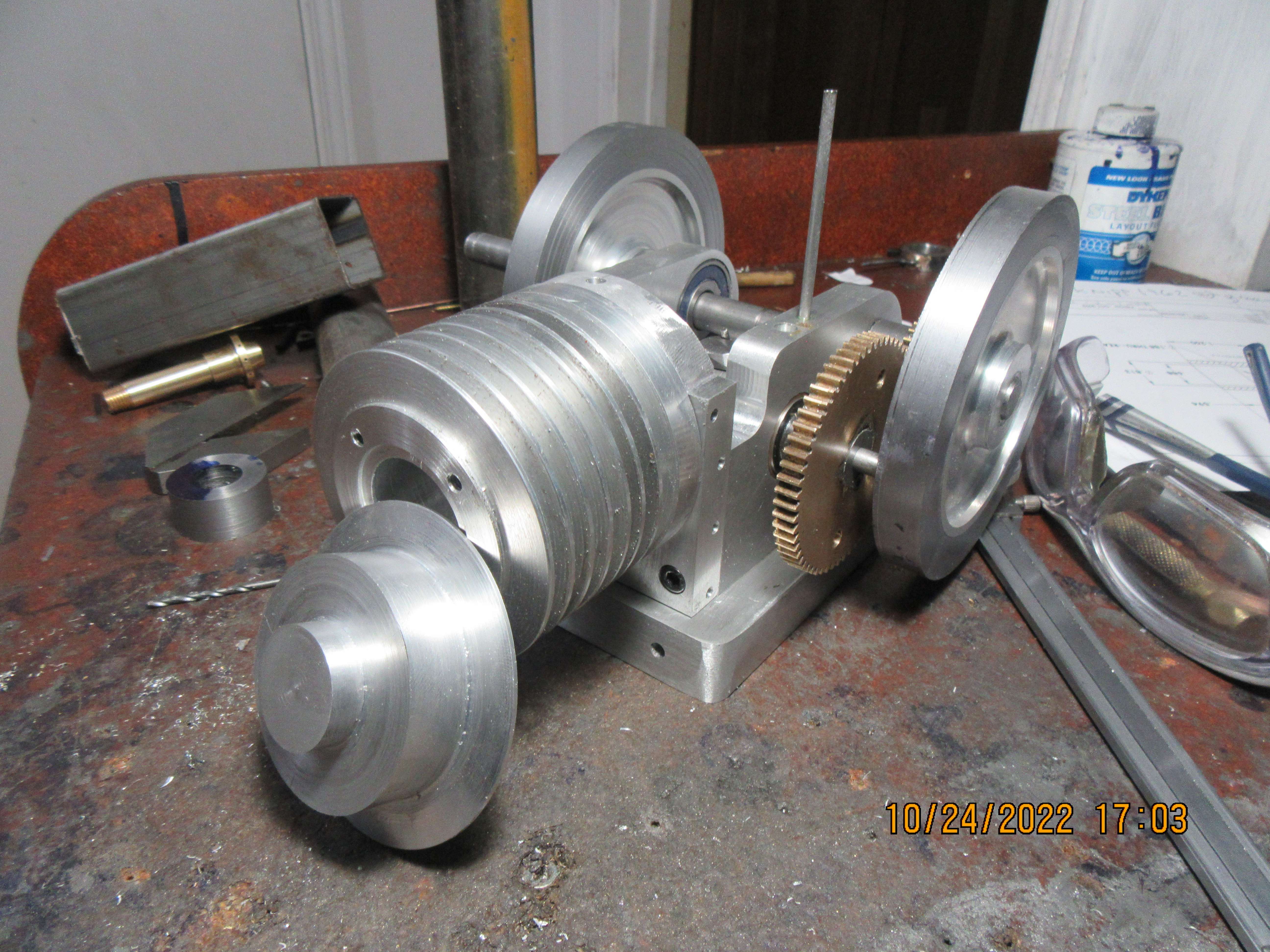

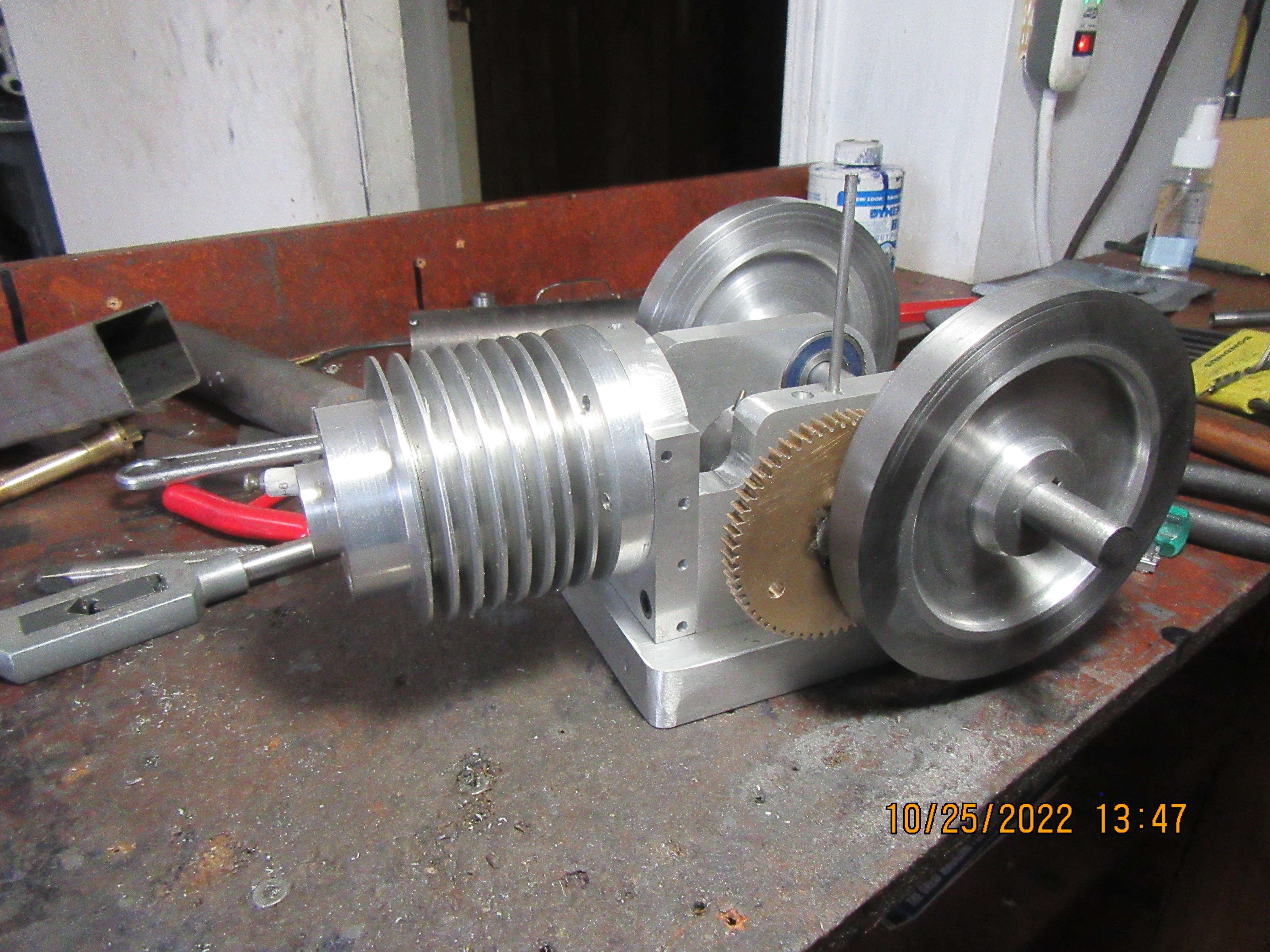
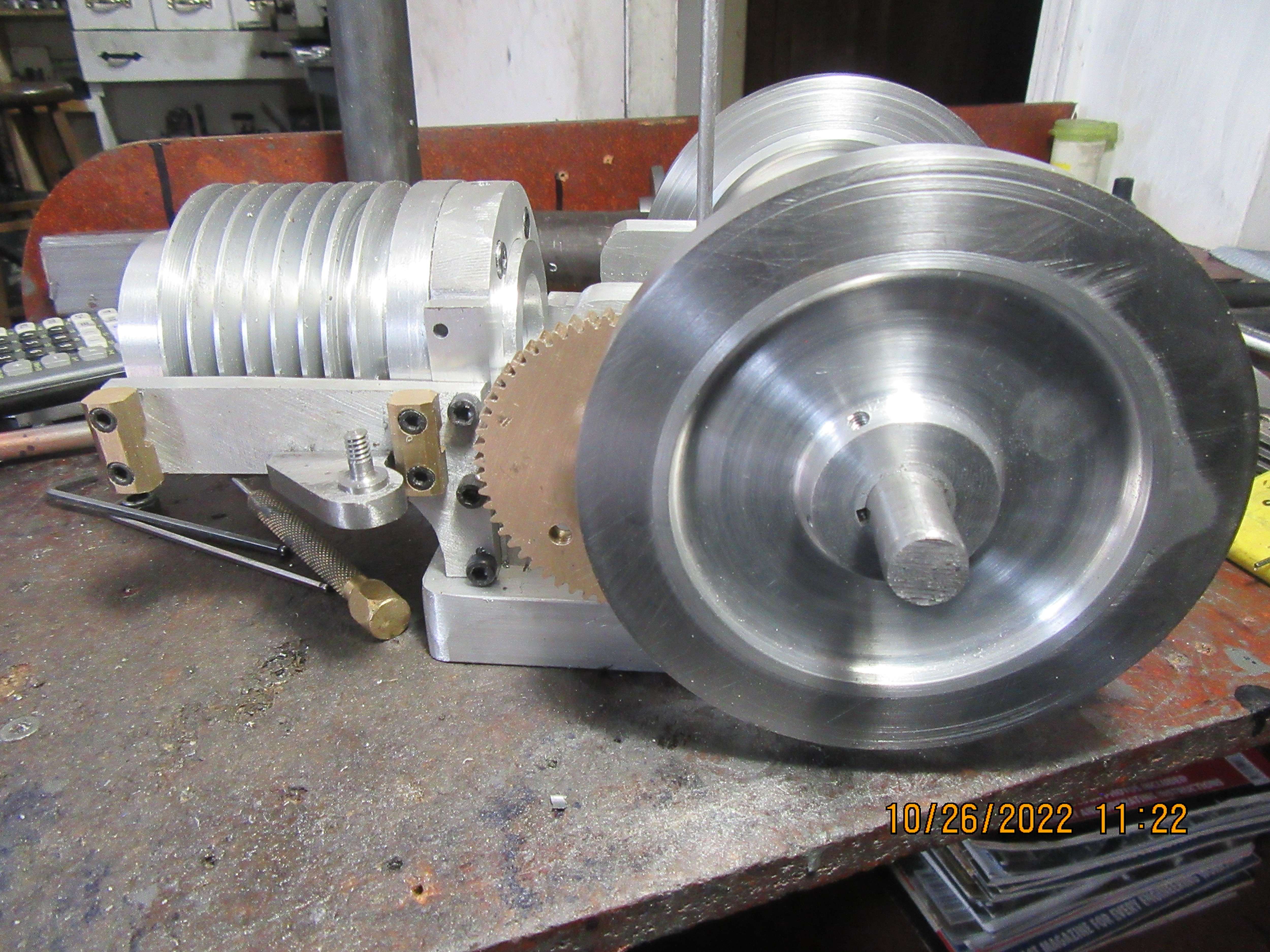























![DreamPlan Home Design and Landscaping Software Free for Windows [PC Download]](https://m.media-amazon.com/images/I/51kvZH2dVLL._SL500_.jpg)































![MeshMagic 3D Free 3D Modeling Software [Download]](https://m.media-amazon.com/images/I/B1U+p8ewjGS._SL500_.png)
